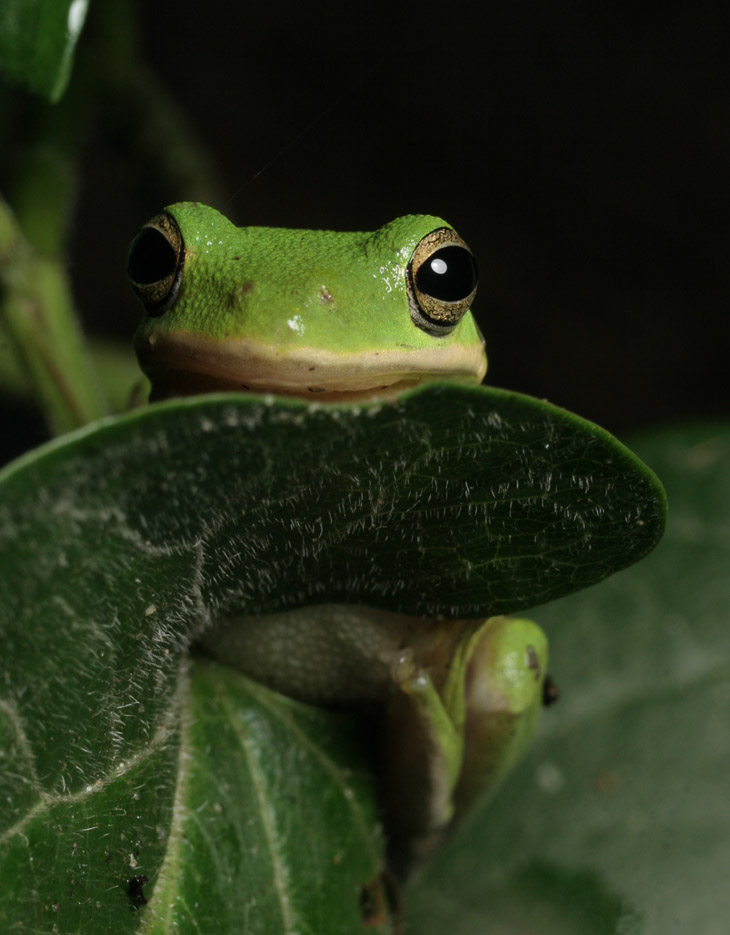
For the past few weeks, I have had little time to chase arthropod pics, and even less time to blog about it, but I’m able to catch up a little now. Some of these images are from before that busy time, and some are ‘current.’
I haven’t been keeping up with the mantises as I did last year, but that’s partially because only two are able to be found dependably. Above, one of them provides a distracted pose at night (as indicated by the dark eyes,) obviously less concerned with me getting into its personal space than with something off to frame right. This one was still a juvenile, but getting pretty big now.
Some nine hours earlier during daylight I had followed what might have been the same one, but it was paying even less attention to me, which does not help my crippling insecurity one little bit. The sudden change of head position to a sharp downward angle is a good indication that it saw something, but for a short while I couldn’t make out what, and rashly thought it was chasing shadows.
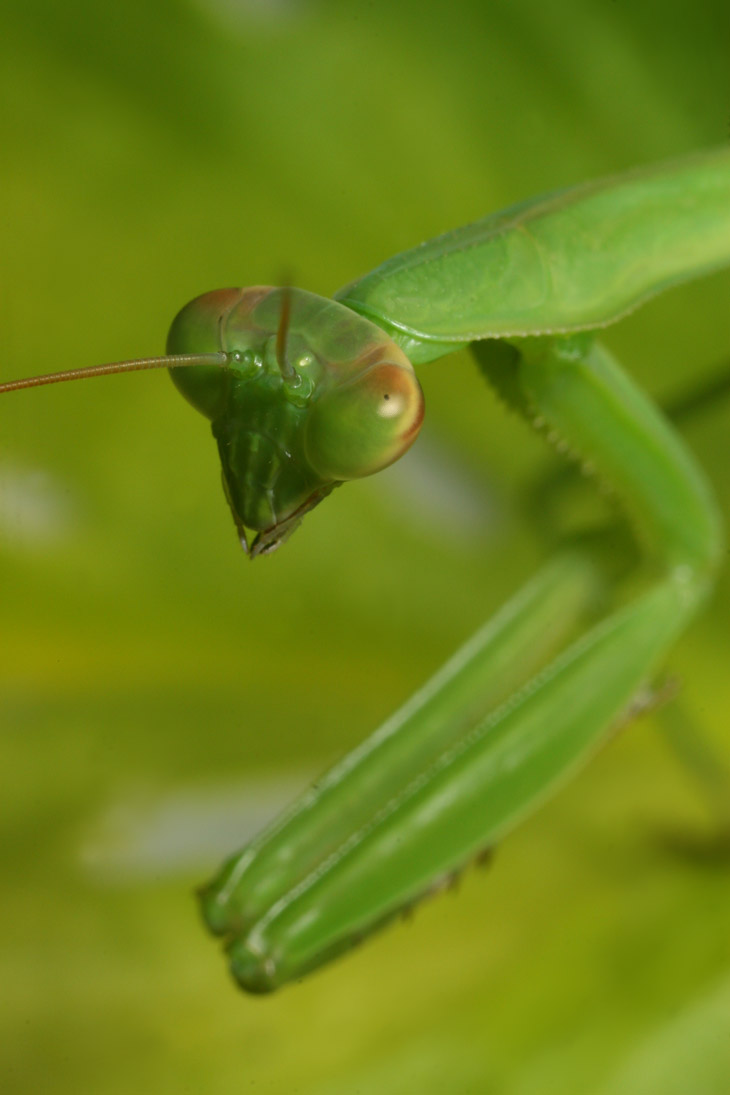
The mantis was perched on the voluminous phlox plants, which provide lots of layers and hiding places, and after a bit I caught some motion myself, which turned out to be a small jumping spider making its way among the leaves and stems. Its path carried it away from the danger zone near the mantis, and eventually it emerged into a clear enough area that I could fire off a few frames, including one dramatic pose as it waved its forelegs in the air.
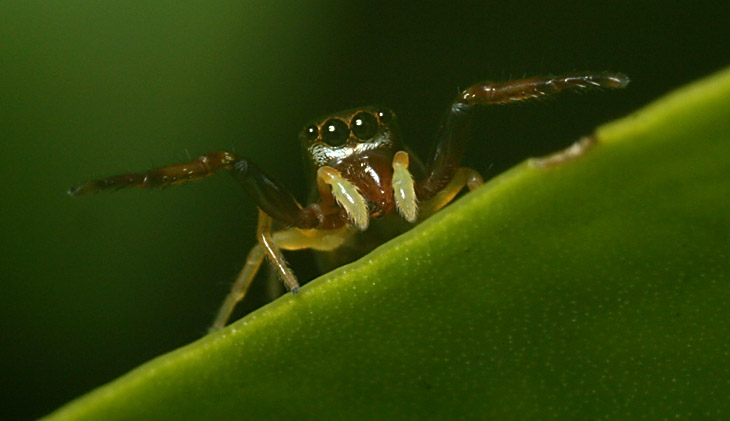
While this might be considered a threat display or even a greeting, it was more likely ‘sniffing’ the air, since spiders have sensory hairs on their forelegs. I have so far been unable to identify this species, even though those yellow pedipalps and median legs are distinctive. Feel free to enlighten me.
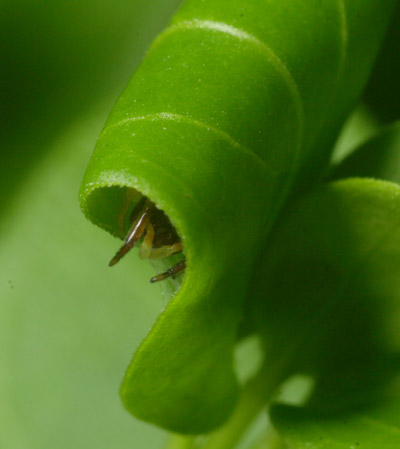 As it ambled along, I saw a rolled leaf in the middle distance (for a small spider, at least) ahead of it, and suspected that this was its destination. Unwilling to disappoint me, the spider quickly made its way up the stem in question and disappeared into the rolled leaf, appearing briefly at the other side long enough for me to fire off a shot. Some spiders make breeding nests out of rolled leaves, as you no doubt remember, stitching the sides together with webbing to make a shelter for their eggs. In some cases at least, it seems this also serves as the honeymoon suite, to which the eager suitor must gain permission to enter or face the wrath of the female. If I ever find myself with too little to do and appropriate weather (meaning, not as hot as fuckinghell,) I’ll have to stake out one of these bowers and try to get a sequence of photos of the courtship – I’ve managed it once, solely by chance, and watched a couple of unsuccessful attempts.
As it ambled along, I saw a rolled leaf in the middle distance (for a small spider, at least) ahead of it, and suspected that this was its destination. Unwilling to disappoint me, the spider quickly made its way up the stem in question and disappeared into the rolled leaf, appearing briefly at the other side long enough for me to fire off a shot. Some spiders make breeding nests out of rolled leaves, as you no doubt remember, stitching the sides together with webbing to make a shelter for their eggs. In some cases at least, it seems this also serves as the honeymoon suite, to which the eager suitor must gain permission to enter or face the wrath of the female. If I ever find myself with too little to do and appropriate weather (meaning, not as hot as fuckinghell,) I’ll have to stake out one of these bowers and try to get a sequence of photos of the courtship – I’ve managed it once, solely by chance, and watched a couple of unsuccessful attempts.
A little later on, I shifted the leaf shelter up sightly so I could get a look down inside, producing a curious perspective on the inhabitant. You have to appreciate how the reflections from the primary eyes form the appearance of a pupil, lending a horrified look to the spider that isn’t seen at all in the earlier portrait shot above.
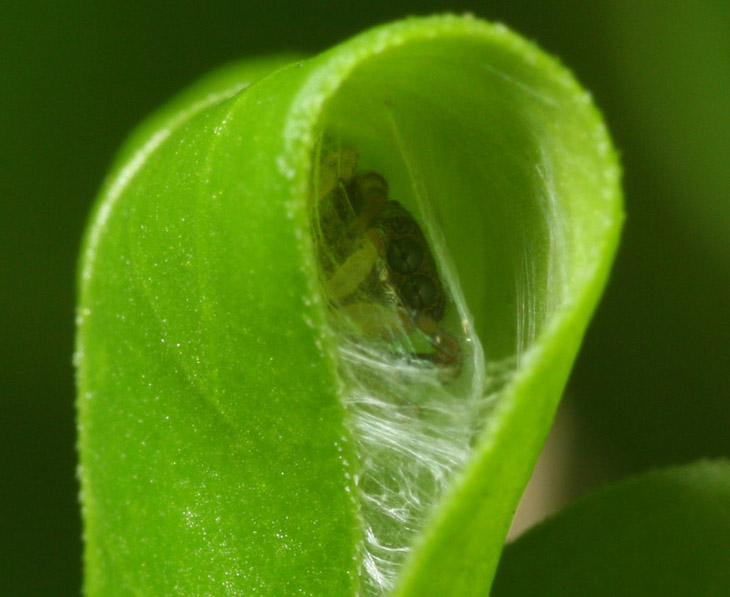
The two mantises I can find dependably reside, for now anyway, on the Japanese maple tree, which sits above the phlox patch. I missed their emergence into adulthood (I probably wasn’t going to top last year’s observations of this anyway,) but I’m still keeping an eye out for courtship and/or the laying of the eggs. Today I chased a couple of images just for the updates, even though I wasn’t capturing any behavior or captivating poses – as I said, it’s been a while and I needed to get back into the swing of things. One of them wasn’t posing very readily and was in a tough position under one branch of the short tree, but I fired off a shot anyway, which resulted in a peculiar ‘moonlight’ ambiance; this was because the front window of the house was in the background, and I was at a direct-enough angle to bounce the flash burst right back into the lens, thankfully not too brightly.
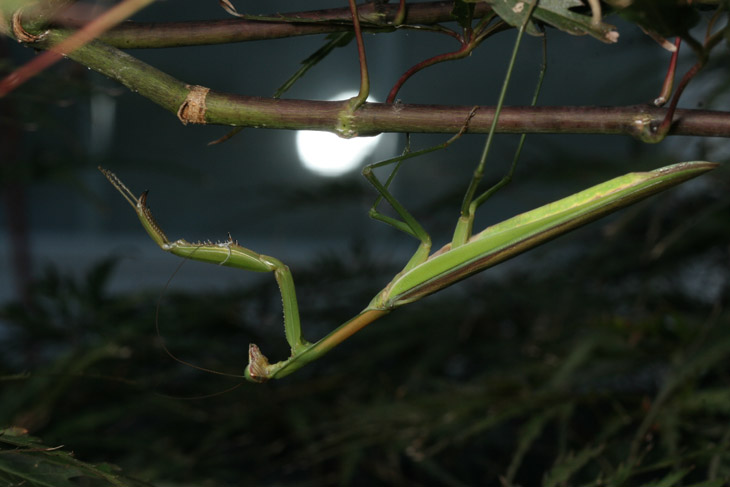
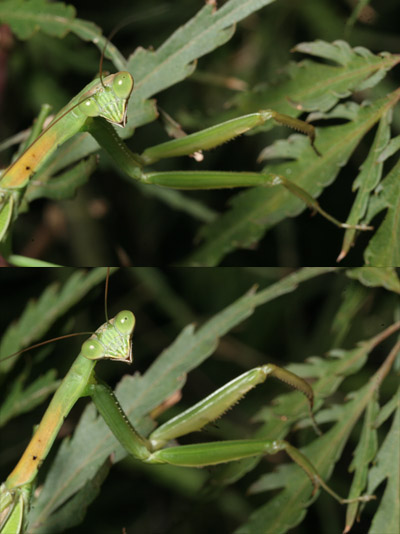 I’ll also take this opportunity to illustrate a simple but important, and often forgotten, facet of macro photography. As I did some portraits of the other mantis since it was slightly more cooperative, I was able to do some comparison shots. Both of these were taken only moments apart without the mantis moving more than a fraction; the difference comes from my position. I saw the antenna falling in front of one compound eye, as well as the leaf in the immediate background lining up right behind the mantis’ head, and shifted position slightly, framing the head against darkness instead and dropping below the antenna – the change also allowed the flash to illuminate the forelegs better. Such a trivial amount of effort to significantly improve the photo, and all it takes is an awareness of the background (including knowing that it will become sharper as the aperture closes down.) Increasing contrast at the point of focus always helps draw the viewer’s eye, done in this case by framing the bright green head against the blackness instead of the green leaves, and the complementary lines of leaves and mantis body are a nice bonus. Don’t get me wrong – I don’t consider this high art, but it’s a nice comparison illustration, and the more of this you can accomplish the stronger your images will be.
I’ll also take this opportunity to illustrate a simple but important, and often forgotten, facet of macro photography. As I did some portraits of the other mantis since it was slightly more cooperative, I was able to do some comparison shots. Both of these were taken only moments apart without the mantis moving more than a fraction; the difference comes from my position. I saw the antenna falling in front of one compound eye, as well as the leaf in the immediate background lining up right behind the mantis’ head, and shifted position slightly, framing the head against darkness instead and dropping below the antenna – the change also allowed the flash to illuminate the forelegs better. Such a trivial amount of effort to significantly improve the photo, and all it takes is an awareness of the background (including knowing that it will become sharper as the aperture closes down.) Increasing contrast at the point of focus always helps draw the viewer’s eye, done in this case by framing the bright green head against the blackness instead of the green leaves, and the complementary lines of leaves and mantis body are a nice bonus. Don’t get me wrong – I don’t consider this high art, but it’s a nice comparison illustration, and the more of this you can accomplish the stronger your images will be.
While in the garden store this morning, in a nursery greenhouse section, The Girlfriend and I heard a strong call within the building, one that I was pretty sure I recognized. I stopped dead and started tracing the sound, and was lucky enough to have the call repeat as I was closing in – no, I did not have the sound recorder with me, nor the camera; rotten foresight for a nature photographer, I know. I took down one hanging plant, started poking around in the leaves, and sure enough found the culprit, a green treefrog (Hyla cinerea) tucked up against a leaf. It had either ridden along when the plants were brought into the building, or had come in through the vent in the greenhouse ceiling, but it wasn’t a very good habitat for a treefrog given the lack of food insects. With some comical fumbling we managed to capture it and tuck it among the items we were buying, bringing it back home to release it onto the plants in the backyard pond.
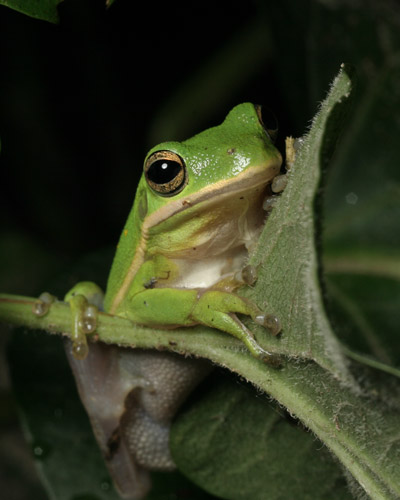 By this time I had the camera ready, and did a quick photo session with the transplant, who may or may not decide to remain in the area; either way, it has much better access to food, shelter, and potential mates than the interior of Home Depot. Treefrogs do not spend much time at all in the water, but they do need to remain moist, and will deposit their eggs in or near the water so the hatching tadpoles are in the right environment. I’m fairly certain we had a grey treefrog hatching last year, and at present there are five juvenile green frogs (Lithobates clamitans, the more aquatic and non-tree-climbing cousins) living within the pond, though the tadpoles seem to have vanished quickly for unknown reasons. We’ll just have to see what happens.
By this time I had the camera ready, and did a quick photo session with the transplant, who may or may not decide to remain in the area; either way, it has much better access to food, shelter, and potential mates than the interior of Home Depot. Treefrogs do not spend much time at all in the water, but they do need to remain moist, and will deposit their eggs in or near the water so the hatching tadpoles are in the right environment. I’m fairly certain we had a grey treefrog hatching last year, and at present there are five juvenile green frogs (Lithobates clamitans, the more aquatic and non-tree-climbing cousins) living within the pond, though the tadpoles seem to have vanished quickly for unknown reasons. We’ll just have to see what happens.
So I’ll close with one more portrait, because you can never have too much green in a post, right? That’s the way I look at it, anyway.
